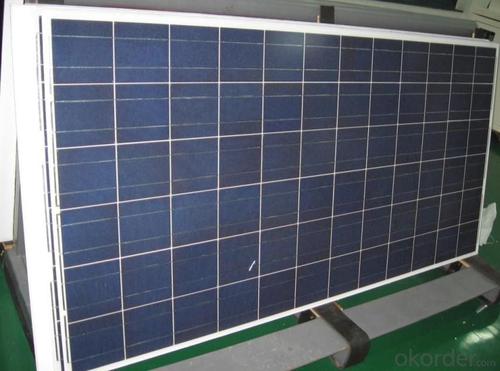Specifications
1.Monocrystalline /Polyscrystalline solar panel 230W
2.with TUV, IEC, CE,ISO
3.sealed with high insulation TPT, anti-aging EVA
Description:
1.high conversion efficiency
2.sealed with high transparency low-iron tempered glass, anti-aging EVA, high insulation TPT.
3.withstand high wind pressure and snow load.
4.with IEC61215/61730, TUV, CE, ISO
Warranty:
1) 5 years for material & workmanship;
2) 12 years for 90% power output;
3) 25 years for 80% power output.
Packaging & Delivery
MOQ: 50pcs
Delivery Time: 10-20 days after order confirmation
Package: Wooden carton or pallet packing
Data:
1.Pm(w):230
2.Voc(V): 34.00
3.Isc(A):8.65
4.Vmp(V):28.45
5.Imp(A):8.09
The solar cell module is a highly efficient crystalline silicon solar cells, ultra-white pattern tempered glass, EVA, TPT backplane transparent and aluminum frame components. It has a long life, strong external mechanical compression characteristics.
Feature of Solar Cell Module
Having high photoelectric conversion efficiency, high reliability; proliferation of advanced technology to ensure that the conversion efficiency of the entire chip uniformity; ensure good conductivity, reliable adhesion and good electrode solder ability; High-precision screen printing graphics and high smoothness, ease with automatic soldering and laser cutting.
Working Principle of Solar Cell Module
Solar cell is a solar photovoltaic energy conversion device, also known as photovoltaic cells. Principle of solar power generation is the photovoltaic effect. When sunlight on solar cells, cell absorbs light energy to generate photo-generated electron - hole pairs. Built-in battery electric field under the effect of photo-generated electrons and holes are separated, appear to accumulate oppositely charged battery terminals, which have a "photo-voltage," which is the "photovoltaic effect." If both sides of the internal electric field of the extraction electrode and connected to the load, the load there, "photocurrent" flow, so as to obtain power output. In this way, the sun's energy directly converts into electrical energy that can be used.
At the same temperature and light intensity on the panels: the greater light intensity, solar panels open-circuit voltage and short circuit current increases, the maximum output power is greater, and can be seen with the open circuit voltage variation of radiation intensity not as good as the short-circuit current with changes in radiation intensity Ming.
In the same light intensity and temperature on panels: When the temperature of the solar cell, the output open circuit voltage decreases significantly with temperature, short-circuit current is increased slightly, the general trend is the maximum output power decreases.
























